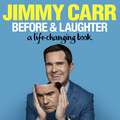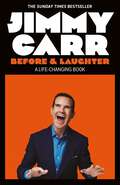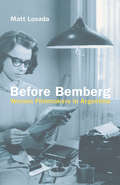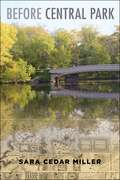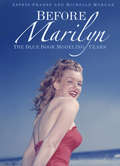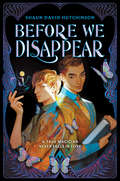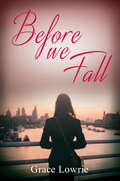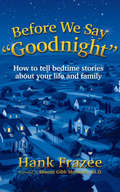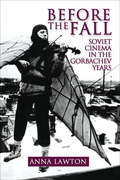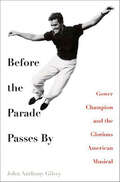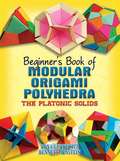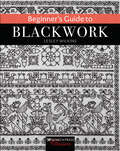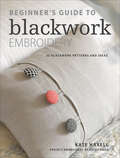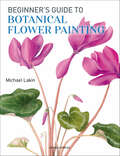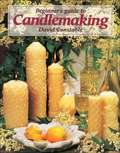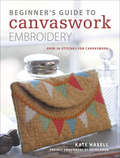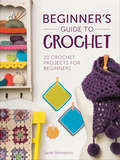- Table View
- List View
Before & Laughter
by Jimmy Carr'Stand-up comedy raised me. It taught me all the skills I need for life, except tax accounting.''Very, very funny - a great read' Gary Davies, The Zoe Ball Breakfast Show'Riveting' Daily Mail'An utterly sincere guide for people to achieve bigger things in life' GuardianCheaper than Scientology, quicker than therapy and much less boring than church - this is the hugely funny and insightful book about happiness by top comedian Jimmy Carr, and anyone feeling stuck in a rut should devour it.In his mid-twenties, Jimmy was bored, boring, unfulfilled and underachieving. He wasn't exactly depressed, but he was very sad. Think of a baby owl whose mum has recently died in a windmill accident. He was that sad. This book tells the story of how Jimmy turned it around and got happy, through the redemptive power of dick jokes. Written to take advantage of the brief window between the end of lockdown and Jimmy getting cancelled for saying something unforgivable to Lorraine Kelly, this book is as timely as it is unnecessary. Because you might be interested in Jimmy's life but he's damn sure you're a lot more interested in your own, Before & Laughter is about both of you. But mainly him. It tells the story of Jimmy's life - the transformation from white-collar corporate drone to fake-toothed donkey-laugh plastic-haired comedy mannequin - while also explaining how to turn your own life around and become the you you've always dreamt of being. At just £20, it's cheaper than Scientology, quicker than therapy, and significantly less boring than church.Before & Laughter contains the answers to all the big questions in life, questions like:· What's the secret to happiness?· Is Jimmy wearing a wig?· What happened with that tax thing? · What's the meaning of life?· Is Jimmy's laugh real?· Can those teeth bite through vibranium?And for readers in the West Country: yes, there are pictures (actually, sorry, there are no pictures, but there's a book about a hungry caterpillar you'll love).Because it's Jimmy Carr - recently scientifically proved to be the funniest comedian in the UK - there are jokes, jokes and more jokes throughout. If laughter really was the best medicine, the NHS would be handing out this book in Nightingale Hospitals.Fascinating, thoughtful and insightful - are all words that appear in the book.(P)2021 Quercus Editions Limited
Before & Laughter: The funniest man in the UK’s genuinely useful guide to life
by Jimmy Carr*A memoir and self-help manual by one of the country's most treasured comedians - for anyone who feels stuck in a rut but doesn't have the tools or self-belief to shake things up*In his mid-twenties, Jimmy was bored, boring, unfulfilled and underachieving. He wasn't exactly depressed, but he was very sad. Think of a baby owl whose mum has recently died in a windmill accident. He was that sad. This book tells the story of how Jimmy turned it around and got happy, through the redemptive power of dick jokes. Written to take advantage of the brief window between the end of lockdown and Jimmy getting cancelled for saying something unforgivable to Lorraine Kelly, this book is as timely as it is unnecessary. Because you might be interested in Jimmy's life but he's damn sure you're a lot more interested in your own, Before & Laughter is about both of you. But mainly him. It tells the story of Jimmy's life - the transformation from white-collar corporate drone to fake-toothed donkey-laugh plastic-haired comedy mannequin - while also explaining how to turn your own life around and become the you you've always dreamt of being. At just £20, it's cheaper than Scientology, quicker than therapy, and significantly less boring than church.Before & Laughter contains the answers to all the big questions in life, questions like:· What's the secret to happiness?· Is Jimmy wearing a wig?· What happened with that tax thing? · What's the meaning of life?· Is Jimmy's laugh real?· Can those teeth bite through vibranium?And for readers in the West Country: yes, there are pictures (actually, sorry, there are no pictures, but there's a book about a hungry caterpillar you'll love).Because it's Jimmy Carr - recently scientifically proved to be the funniest comedian in the UK - there are jokes, jokes and more jokes throughout. If laughter really was the best medicine, the NHS would be handing out this book in Nightingale Hospitals.Fascinating, thoughtful and insightful - are all words that appear in the book.
Before Bemberg: Women Filmmakers in Argentina
by Matt LosadaBefore Bemberg: Argentine Women Filmmakers calls into question the historiography of Argentine women filmmakers that has centered on María Luisa Bemberg to the exclusion of her predecessors. Its introductory discussion of the abundant initial participation by women in film production in the 1910s is followed by an account of their exclusion from creative roles in the studio cinema, which was only altered by the opportunities opened by a boom in short filmmaking in the 1960s. The book then discusses in depth the six sound features directed by women before 1980, which, despite their trailblazing explorations of the perspectives of female characters, daring denunciations of authoritarianism and censorship, and modernizing formal invention, have been forgotten by Argentine film history. Looking at the work and roles of Eva Landeck, Vlasta Lah, María Herminia Avellaneda and María Elena Walsh and Maria Bemberg, the book recognizes these filmmakers’ contributions at a significant moment in which movements to eliminate gender-based oppression and violence in Argentina and elsewhere are surging. Watch some of the films discussed in the book with English subtitles (https://www.youtube.com/channel/UCF_6F4am5024rklIWwExUVA?view_as=subscriber).
Before Central Park
by Sara Cedar MillerWinner - 2023 John Brinkerhoff Jackson Book Prize, UVA Center for Cultural LandscapesWith more than eight hundred sprawling green acres in the middle of one of the world’s densest cities, Central Park is an urban masterpiece. Designed in the middle of the nineteenth century by the landscape architects Frederick Law Olmsted and Calvert Vaux, it is a model for city parks worldwide. But before it became Central Park, the land was the site of farms, businesses, churches, wars, and burial grounds—and home to many different kinds of New Yorkers.This book is the authoritative account of the place that would become Central Park. From the first Dutch family to settle on the land through the political crusade to create America’s first major urban park, Sara Cedar Miller chronicles two and a half centuries of history. She tells the stories of Indigenous hunters, enslaved people and enslavers, American patriots and British loyalists, the Black landowners of Seneca Village, Irish pig farmers, tavern owners, Catholic sisters, Jewish protesters, and more. Miller unveils a British fortification and camp during the Revolutionary War, a suburban retreat from the yellow fever epidemics at the turn of the nineteenth century, and the properties that a group of free Black Americans used to secure their right to vote. Tales of political chicanery, real estate speculation, cons, and scams stand alongside democratic idealism, the striving of immigrants, and powerfully human lives. Before Central Park shows how much of the history of early America is still etched upon the landscapes of Central Park today.
Before Marilyn
by Michelle Morgan Astrid FranseBefore Marilyn tells the story of Marilyn Monroe's modelling career, during which time she was signed to the famous Blue Book Agency in Hollywood. The head of the agency, Miss Emmeline Snively, saw potential in the young woman and kept detailed records and correspondence throughout their professional relationship and beyond. On the day of Monroe's funeral, Snively gave an interview from her office, talking about the girl she had discovered, before announcing, rather dramatically, that she was closing the lid on her Marilyn Monroe archive that day - to 'lock it away forever'. This archive was purchased by Astrid Franse, and together with bestselling Marilyn Monroe biographer Michelle Morgan they draw on this collection of never-before-seen documents, letters and much, much more. Before Marilyn explores an aspect of Monroe's life that has never been fully revealed - by charting every modelling job she did, and illustrating the text with rare and unpublished photographs of the young model and her mentor.
Before Mickey: The Animated Film 1898–1928
by Donald CraftonThis witty and fascinating study reminds us that there was animation before Disney: about thirty years of creativity and experimentation flourishing in such extraordinary work as Girdie the Dinosaur and Felix the Cat. Before Mickey, the first and only in-depth history of animation from 1898-1928, includes accounts of mechanical ingenuity, marketing and art. Crafton is equally adept at explaining techniques of sketching and camera work, evoking characteristic styles of such pioneering animators as Winsor McCay and Ladislas Starevitch, placing work in its social and economic context, and unraveling the aesthetic impact of specific cartoons. "Before Mickey's scholarship is quite lively and its descriptions are evocative and often funny. The history of animation coexisted with that of live-action film but has never been given as much attention."—Tim Hunter, New York Times
Before Mickey: The Animated Film, 1898-1928
by Donald CraftonThis witty and fascinating study reminds us that there was animation before Disney: about thirty years of creativity and experimentation flourishing in such extraordinary work as Girdie the Dinosaur and Felix the Cat. Before Mickey, the first and only in-depth history of animation from 1898-1928, includes accounts of mechanical ingenuity, marketing and art. Crafton is equally adept at explaining techniques of sketching and camera work, evoking characteristic styles of such pioneering animators as Winsor McCay and Ladislas Starevitch, placing work in its social and economic context, and unraveling the aesthetic impact of specific cartoons. "Before Mickey's scholarship is quite lively and its descriptions are evocative and often funny. The history of animation coexisted with that of live-action film but has never been given as much attention. "—Tim Hunter, New York Times
Before We Disappear
by Shaun David HutchinsonA Junior Library Guild Gold Standard Selection!It’s a new star-crossed romance about the magic of first love from the acclaimed author of We Are the Ants and Brave Face, Shaun David Hutchinson.Jack Nevin’s clever trickery and moral flexibility make him the perfect assistant to the Enchantress, one of the most well-known stage magicians in turn-of-the-nineteenth-century Europe. Without Jack’s steady supply of stolen tricks, the Enchantress’s fame would have burned out long ago.But when Jack’s thievery catches up to them, they’re forced to flee to America to find their fortune. Luckily, the Enchantress is able to arrange a set of sold-out shows at Seattle’s Alaska–Yukon–Pacific World’s Fair Exposition. She’s convinced they’re going to rich and famous until a new magician arrives on the scene. Performing tricks that defy the imagination, Laszlo’s show overshadows the Enchantress, leaving Jack no choice but to hunt for the secrets to his otherworldly illusions. But what Jack uncovers isn’t at all what he expected.Behind Laszlo’s tricks is Wilhelm—a boy that can seemingly perform real magic. Jack and Wilhelm have an instant connection, and as the rivalry between the Enchantress and Laszlo grows, so too does Jack and Wilhelm’s affection. But can Jack choose between the woman who gave him a life and the boy who is offering him everything?It’s a stirring tale about the magic of love from award-winning author Shaun David Hutchinson.
Before We Fall: The Wildham Series (The Wildham Series #2)
by Grace LowrieWhen quiet Cally, an amateur ballet dancer, is suddenly diagnosed with cancer she runs away from her boyfriend Liam, her job in a call centre and her safe life in Wildham – in order to experience ‘real’ life in London. Taking a job as a stripper and flat-sitting in the top of an office tower she meets her obnoxious neighbour Bay; a tattooed, drug-taking, suicidal artist, haunted by the death of those close to him. Despite their differences, the two strike up a friendship – Bay pushes Cally to try new things while Cally provides Bay with a muse – and they fall in love. But their secrets threaten to tear them apart and time is running out...
Before We Fall: The Wildham Series (The\wildham Ser. #2)
by Grace LowrieWhen quiet Cally, an amateur ballet dancer, is suddenly diagnosed with cancer she runs away from her boyfriend Liam, her job in a call centre and her safe life in Wildham – in order to experience ‘real’ life in London. Taking a job as a stripper and flat-sitting in the top of an office tower she meets her obnoxious neighbour Bay; a tattooed, drug-taking, suicidal artist, haunted by the death of those close to him. Despite their differences, the two strike up a friendship – Bay pushes Cally to try new things while Cally provides Bay with a muse – and they fall in love. But their secrets threaten to tear them apart and time is running out...
Before We Say "Goodnight": How to Tell Bedtime Stories About Your Life and Family
by Hank FrazeeA unique way to turn bedtime stories into an opportunity to strengthen our bond with our children. Before We Say &“Goodnight&” will show you how to captivate your child&’s imagination with a subject they literally can&’t get enough of—you. In this book, you&’ll discover an easy-to-learn three-step method to turn your life experiences, and those of your family, into great bedtime stories, all without notes or memorization. Best of all, you&’ll make bedtime one of the happiest parts of the day. &“Our children and grandchildren want to know who we really are. This book provides a wonderful method to share our life with those we love. It&’s out of this world!&” —Buzz Aldrin, astronaut
Before the Fall: Soviet Cinema in the Gorbachev Years
by Anna LawtonAn expanded edition of Kinoglasnost that examines the fascinating world of Soviet cinema during the yeas of glasnost and perestroika in the 1980s.In Before the Fall, Anna Lawton shows how the reforms that shook the foundations of the Bolshevik state and affected economic and social structures have been reflected in the film industry. A new added chapter provides a commentary on the dramatic changes that marked the beginning of democracy in Russia.Soviet cinema has always been closely connected with national political reality, challenging the conventions of bourgeois society and educating the people. In this pioneering study, Lawton discusses the restructuring of the main institutions governing the industry; the abolition of censorship; the emergence of independent production and distribution systems; the dismantling of the old bureaucratic structures and the implementation of new initiatives. She also surveys the films that remained unscreened for decades for political reasons, films of the new wave that look at the past to search out the truth, and those that record current social ills or conjure up a disquieting image of the future.“What makes Kinoglasnost pre-eminent among current studies of the subject is that sustained attention Lawton pays to changes in the formal organization of Soviet cinema and in the cinema industry.” —Julian Graffy, Sight and Sound“The author constructs a complex, multilayered narrative of a steady and significant movement toward radical change in Soviet society, an account of the growing anxiety and the hope experienced by Russian filmmakers and the intelligentsia.” —Ludmila Z. Pruner, Slavic and East European Journal
Before the Movies: American Magic Lantern Entertainment and the Nation's First Great Screen Artist, Joseph Boggs Beale
by Terry Borton Debbie BortonBefore the Movies is the first book about American screen entertainment in the pre-movie era. A groundbreaking study, lavishly illustrated with 330 color pictures, it is a comprehensive survey of the American artists who created early magic-lantern stories and songs for the screen. The book emphasizes the work of Joseph Boggs Beale, a pioneer in the field and demonstrates that Beale almost single-handedly created American-made screen entertainment for the generation before the movies. His lifetime output was 2,073 images in 258 sets—the screen-time equivalent of 14 full-length films—which millions enjoyed every year. The provenance, attribution, and dates of Beale's lantern slides are discussed in detail, and a comprehensive catalog of his lantern images makes Before the Movies an essential reference volume.
Before the Parade Passes By: Gower Champion and the Glorious American Musical
by John Anthony GilveyDuring the Golden Age of the Broadway musical, few director-choreographers could infuse a new musical with dance and movement in quite the way Gower Champion could. From his earliest Broadway success with Bye Bye Birdie to his triumphant and bittersweet valedictory, 42nd Street, musicals directed by Champion filled the proscenium with life. At their best, they touched the heart and stirred the soul with a skillful blend of elegance and American showmanship. He began his career as one-half of "America's Youngest Dance Team" with Jeanne Tyler and later teamed with his wife, dance partner, and longtime collaborator, Marge Champion. This romantic ballroom duo danced across America in the smartest clubs and onto the television screen, performing story dances that captivated the country. They ultimately took their talent to Hollywood, where they starred in the 1951 remake of Show Boat, Lovely to Look At, and other films. But Broadway always called to Champion, and in 1959 he was tapped to direct Bye Bye Birdie. The rest is history. In shows like Birdie, Carnival, Hello, Dolly!, I Do! I Do!, Sugar, and 42nd Street, luminaries such as Chita Rivera, Dick Van Dyke, Carol Channing, Mary Martin, Robert Preston, Tony Roberts, Robert Morse, Tammy Grimes, and Jerry Orbach brought Champion's creative vision to life. Working with composers and writers like Jerry Herman, Michael Stewart, Charles Strouse, Lee Adams, and Bob Merrill, he streamlined the musical making it flow effortlessly with song and dance from start to finish.John Gilvey has spoken with many of the people who worked with Champion, and in Before the Parade Passes By he tells the life story of this most American of Broadway musical director-choreographers from his early days dancing with Marge to his final days spent meticulously honing the visual magic of 42nd Street. Before the Parade Passes By is the life story of one man who personified the glory of the Broadway musical right up until the moment of his untimely death. When the curtain fell to thunderous applause on the opening night of 42nd Street, August 25, 1980, legendary impresario David Merrick came forward, silenced the audience, and announced that Champion had died that morning. As eminent theatre critic Ethan Mordden has firmly put it, "the Golden Age was over." Though the Golden Age of the Broadway musical is over, John Gilvey brings it to life again by telling the story of Gower Champion, one of its most passionate and creative legends.
Before-and-After Photography: Histories and Contexts
by Jordan BearThe before-and-after trope in photography has long paired images to represent change: whether affirmatively, as in the results of makeovers, social reforms or medical interventions, or negatively, in the destruction of the environment by the impacts of war or natural disasters. This interdisciplinary, multi-authored volume examines the central but almost unspoken position of before-and-after photography found in a wide range of contexts from the 19th century through to the present. Packed with case studies that explore the conceptual implications of these images, the book’s rich language of evidence, documentation and persuasion present both historical material and the work of practicing photographers who have deployed – and challenged – the conventions of the before-and-after pairing. Touching on issues including sexuality, race, environmental change and criminality, Before-and-After Photography examines major topics of current debate in the critique of photography in an accessible way to allow students and scholars to explore the rich conceptual issues around photography’s relationship with time andimagination.
Befriending the Commedia dell'Arte of Flaminio Scala
by Natalie Crohn SchmittThe most important theatrical movement in sixteenth- and early seventeenth-century Europe, the commedia dell'arte has inspired playwrights, artists, and musicians including Molière, Dario Fo, Picasso, and Stravinsky. Because of its stock characters, improvised dialogue, and extravagant theatricalism, the commedia dell'arte is often assumed to be a superficial comic style. With Befriending the Commedia dell'Arte of Flaminio Scala, Natalie Crohn Schmitt demolishes that assumption.By reconstructing the commedia dell'arte scenarios published by troupe manager Flaminio Scala (1547-1624), Schmitt demonstrates that in its Golden Age the commedia dell'arte relied as much on craftsmanship as on improvisation and that Scala's scenarios are a treasure trove of social commentary on early modern daily life in Italy.In the book, Schmitt makes use of her intensive research into the social and cultural history of sixteenth-century Italy and the aesthetic principles of the period. She combines this research with her insights drawn from studying with contemporary commedia dell'arte performers and from directing a production of one of Scala's scenarios. The result is a new perspective on the commedia dell'arte that illuminates the style's full richness.
Beginner's Book of Modular Origami Polyhedra: The Platonic Solids
by Rona Gurkewitz Bennett ArnsteinWhether or not you're familiar with traditional origami models, you're sure to be captivated by the fun and fascination of creating abstract geometric forms. This book by an expert paperfolder offers a clear, concise introduction to the special techniques for making beautiful, complex polyhedra models.These 17 projects are based on the classic Platonic solids: the tetrahedron, hexahedron, octahedron, dodecahedron, and icosahedron. Folders at every level of experience, from absolute beginners to old hands, will appreciate the step-by-step diagrams and their detailed views of the models' assembly. Additional helpful features include photos of the complete models, background on the Platonic solids, and references.
Beginner's Guide to Blackwork (Search Press Classics)
by Lesley WilkinsAn introduction to the sixteenth century embroidery technique in which beautiful patterns are created by stitching geometric designs onto evenweave fabric.Inspired by the past, Lesley Wilkins illustrates her techniques with a whole host of wonderful designs flowers, plants, birds, animals and figures. She covers everything from the materials to use and working with a chart, to getting started and how to stitch. Patterns are created by small stitched units which are combined in many different ways some heavily textured, some delicate and light. Borders can be built up by repeating and joining motifs. Clear step-by-step photographs accompany the author’s comprehensive instructions, and the motifs, borders, fill-in patterns and images are all charted, with inspirational pictures of embroideries showing how to build up finished designs.“The designs in this book are amazing. Some are very simple and others have a look of intricacy in them. There are figures, flowers, borders and much much more, this gives a lot of inspiration if you want to design your own piece.” —Postcard Reviews“A comprehensive book about the blackwork technique, covering the materials to use, how to use a chart, getting started and what designs we could do.” —Mr X Stitch
Beginner's Guide to Blackwork Embroidery: 30 blackwork patterns and ideas
by Kate HaxellLearn the basic stitches and essential techniques to create beautiful blackwork embroidery with this comprehensive, illustrated guide. Expert crafter Kate Haxell introduces readers to the centuries-old technique of blackwork embroidery. This volume explains the basic tools and materials you need to get started, plus thirty timelessly elegant blackwork embroidery patterns. Every pattern has clear step-by-step instructions and is accompanied by colored diagrams, making it easy to create these bold designs yourself. This compact book also includes instructions for two projects by professional embroiderer Becky Hogg—a bird book bag and decorative blackwork buttons.
Beginner's Guide to Botanical Flower Painting
by Michael LakinThis complete guide to the crisp, precise finish of botanical painting marries traditional technique with contemporary style and includes sections on colour, drawing, continuous tone, composition and dissection.Michael Lakin makes botanical art approachable with simple exercises and a variety of step-by-step instructional approaches, making this a fantastic guide for aspirational beginners.
Beginner's Guide to Candlemaking
by David ConstableEverything you ever wanted to know about simple candlemaking. An inspirational guide for the complete beginner. Contents include: Cast, dipped and rolled candles, Floating candles and candles in containers, Stenciled, painted and textured candles, Perfumed flower and fruit candles.
Beginner's Guide to Canvaswork Embroidery: Over 30 stitches for canvaswork
by Kate HaxellLearn the basic stitches and essential techniques to create beautiful canvaswork embroidery with this comprehensive guide. Every stitch has clear step-by-step instructions and is accompanied by coloured diagrams, making it easy to create impressive embroidered designs. This short book also includes instructions for two projects--a modern bargello cushion and a whimsical clutch purse.
Beginner's Guide to Colorwork Knitting: 16 Projects and Techniques to Learn to Knit with Color
by Ella AustinThe knitting pattern writer and founder of BomBella shares her love of bold colors with these colorwork techniques for sweaters, socks, blankets and more. In Beginner&’s Guide to Colorwork Knitting, knit designer Ella Austin teaches all the techniques necessary to start knitting rich, vibrant and colorful patterns. Choose from brightly colored stripy socks and work your way up to a patterned beanie hat and even a stunning fair isle sweater. This easy to follow guide pairs projects with each new technique, building from Stripes to Slipped Stitches, Stranded Colorwork, Intarsia, Double Knitting, Modular Knitting, and Entrelac. Projects include blankets, scarves, shawls, bags, mitts, cushions, and more. Even if you can only knit and purl, this book will have you making gorgeous colorwork knits before you know it!
Beginner's Guide to Crewelwork Embroidery: 33 stitches and techniques for crewelwork
by Kate HaxellLearn the basic stitches and essential techniques to create beautiful crewelwork embroidery with this comprehensive guide. Every stitch has clear step-by-step instructions and is accompanied by coloured diagrams, making it easy to create impressive embroidered designs. This short book also includes instructions for two projects--a quirky sleeping mask and a colourful bolster cushion.
Beginner's Guide to Crochet: 20 Crochet Projects for Beginners
by Sarah ShrimptonWant to learn to crochet, but have no idea where to start? Well this book will guide you through the basics and have you completing your first project in just one day! Each new stitch is explained in easy steps with accompanying photographs and diagrams and is followed up with a project showing you how to utilize your new found skills. The 20 modern projects range from a super simple cafetiere cosy to a granny square blanket, plus there is a section dedicated to "extreme crochet," using t-shirt yarn to create larger-than-life crocheted creations. In addition, crochet charts are included for each stitch and pattern with the author explaining, in detail, how to read and follow charts. The author's chatty, informal style will take you on your journey from newbie to fully-fledged crocheter and before you know it you'll be crocheting and making fantastic homemade presents for friends and family. Crochet blogger Sarah Shrimpton, who blogs under the name Annaboos House, is a self taught crocheter and former teacher, who started blogging for fun and now has over 7k followers on Instagram.
